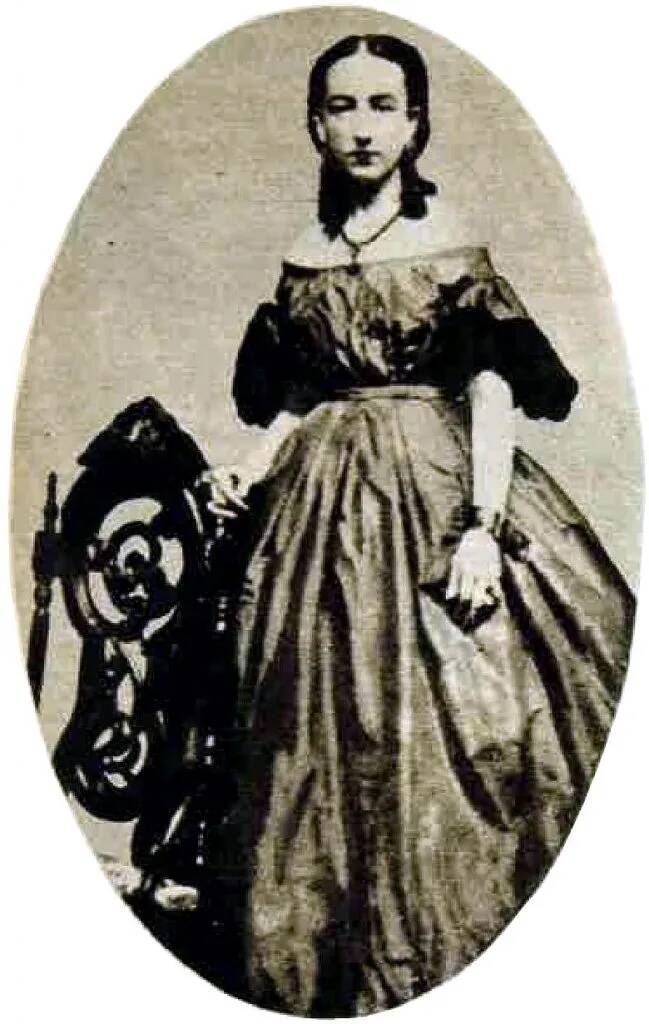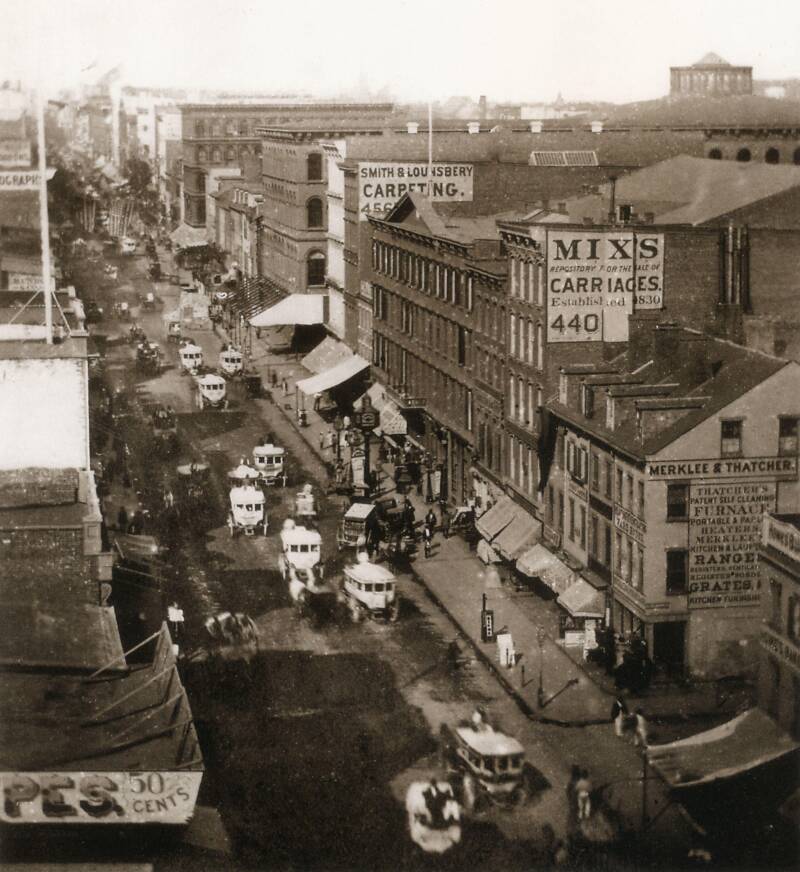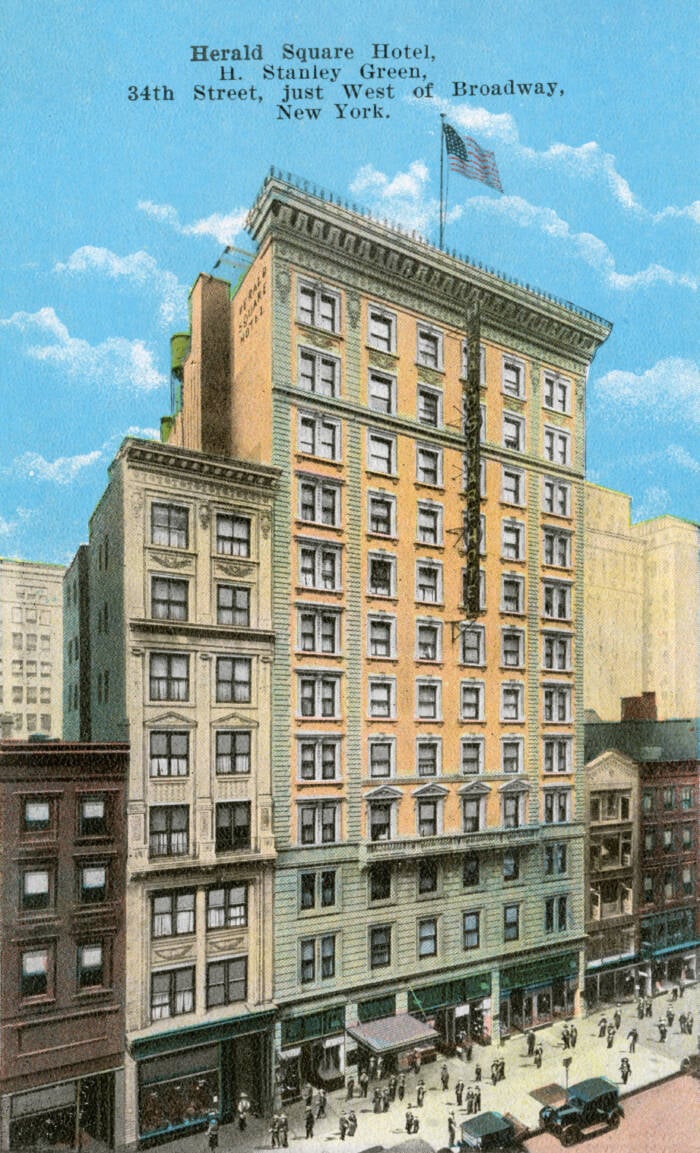In 1907, Ida Wood emptied her enormous bank account and booked a room at the Herald Square Hotel — where she would spend the final two decades of her life in seclusion.

Public DomainFew images remain of socialite Ida Wood, who became a recluse.
In 1907, Ida Wood called up two of her close relatives, booked a room at the Herald Square Hotel in New York City, and shut the door. As the years passed, she and the others stayed firmly ensconced inside. It wasn’t until 1931 that Wood cracked open the door and stepped back into the world — and she only did so because one of her relatives, her sister, was dying.
The lawyers who responded to the scene had a number of questions about Wood, then in her 90s. But the more investigators learned about her, the more bizarre her story seemed. For one, the frail old recluse was actually a wealthy former socialite. For another, the name “Ida Wood” was fake.
Indeed, Wood had moved to New York City in 1857, reinvented herself, married rich, and lived the high life for years. Shortly after her husband died, she took $1 million from the bank and retreated from the world.
This is the strange story of Ida Wood, the woman who changed her name, became a wealthy socialite, and spent decades living in a hotel.
The Invention Of Ida Wood
Ida Wood was born on Jan. 14, 1838 as Ellen Walsh, the daughter of recent Irish immigrants to the United States. She grew up in Massachusetts, but, in 1857 at the age of 19, decided to move to New York City.

EMU history/Alamy Stock PhotoNew York City in 1859, a few years after “Ida Mayfield” arrived in town.
There, Ellen Walsh shed her past and became Ida Mayfield. Ida Mayfield was not an immigrant’s daughter — she was the child of “Henry Mayfield,” a wealthy Louisiana sugar planter, and “Ann Mary Crawford,” who could trace her lineage back to the Earls of Crawford.
And Ida Mayfield had a plan to climb the social ladder in New York.
After reading the society pages, Ida Mayfield learned about a wealthy businessman named Benjamin Wood, the brother of the former mayor of New York City. Though Benjamin was married, Mayfield decided to write him.
“I venture to address you from hearing a young lady, one of your ‘former loves,’ speak of you,” she wrote. “She says you are fond of ‘new faces.’ I fancy that as I am new in the city and in ‘affairs de coeur’ that I might contract an agreeable intimacy with you; of as long duration as you saw fit to have it. I believe that I am not extremely bad looking, nor disagreeable. Perhaps not quite as handsome as the lady with you at present, but I know a little more, and there is an old saying— ‘Knowledge is power.'”
The brazen letter worked. Ida Mayfield became Benjamin Wood’s mistress and seemingly gave birth to his daughter, Emma. And in 1867, Ida Mayfield became Ida Wood after the death of Benjamin’s first wife, Delia.
The Dazzling Life Of A New York Socialite
Practically overnight, Ellen Walsh became a New York socialite. In 1860, she danced with the Prince of Wales. The next year, she met president-elect Abraham Lincoln when he passed through the city. Newspapers spoke of her fondly as a “belle of New Orleans” with “bright plumage” and “fragile beauty.”

Mathew Benjamin BradyBenjamin Wood, the husband of Ida Wood.
She had successfully aligned herself with a wealthy businessman — Benjamin Wood owned and operated the New York Daily News — but Ida’s chosen paramour was also a gambler. He “had found money easy to make and even easier to spend, like many New Yorkers of his time,” Benjamin’s nephew remarked, according to a 1932 article in The New York Times.
But Ida knew what it was like to be poor, and found a way to insulate herself from her husband’s gambling losses. He could gamble, Ida said, as long as she received half of all his winnings and he paid for all his losses.
It was a good deal for Ida. When Benjamin died in 1900, he left her his $2 million estate — and Ida even inherited ownership of the New York Daily News. But Ida Wood would use her riches in an unusual way.
How Ida Wood Became The “Recluse Of Herald Square”
A year after her husband died, Ida Wood sold his newspaper for over $250,000 — a fortune in 1901. She also sold many of her possessions. And during the Panic of 1907, Wood declared that she was “tired of everything” and withdrew $1 million — more than $30 million today — from her account at the Guaranty Trust Company.
Then, alongside her sister Mary and her daughter Ellen, she checked into Room 552 at the Herald Square Hotel.
A bellhop later stated that he knocked on the door of Room 552 daily to see if the women needed anything. They often ordered crackers, coffee, evaporated milk, bacon, eggs, and sometimes fish. Sometimes, they requested Havana cigars and jars of petroleum jelly (which Ida rubbed into her face). The bellhop remembered that Ida Wood routinely tipped him 10 cents, but begrudgingly, as if it were the only money she had in the world.

Chronicle/Alamy Stock PhotoThe Herald Square Hotel, where Ida Wood spent the last several decades of her life.
The women in Room 552 were odd characters. But Ida Wood always paid their bills in cash. The hotel didn’t mind.
The Final Years Of Ida Wood
The world that Ida Wood had built at the Herald Square Hotel began to fall apart in 1928, when her daughter Emma got sick. Emma went to the hospital and died at the age of 71. Then, in 1931, Ida’s sister Mary fell ill, forcing 93-year-old Ida to open the door and call for help.
Mary died, but not before numerous people came and went from Room 552. They found the room stuffed full of junk — piles of teetering yellowed newspapers, old discarded balls of string — but Ida Wood appeared far from a destitute hoarder. Still “extraordinary pretty,” she claimed that she was a wealthy former socialite, the widow of the late Benjamin Wood.

Glasshouse Images/Alamy Stock PhotoHerald Square in the 1930s. As New York City became more bustling, Ida Wood sank deeper into solitude — until she was forced to open her hotel door in 1931.
To the surprise of lawyers called to the scene, Ida seemed to be telling the truth. A search of Room 552 turned up $247,200 in cash stuffed into a shoebox, and nurses who searched Ida found $500,000 in one of her dress pockets. In the hotel’s basement, where Ida had stored dozens of her trunks, investigators found fine fabrics, jewelry, gold certificates, and other treasures.
Still, given the state of Ida’s suite, the hotel decided to move Ida to a room on the fourth floor. “Why?” she demanded. “I can take care of myself.”
But Ida’s nephew by marriage, Otis Wood, disagreed. He pushed the courts to declare Ida incompetent, and they agreed.
“I did quite well, you know, and it seems strange they should call me incompetent,” Ida told reporters. “I made money and I kept it. So many people whom every one considers competent can’t do that.”
As tales of the millionaire recluse made headlines across the country, more than 1,000 people claimed to be Ida Wood’s long-lost relatives. But when Ida Wood died at the age of 94 in 1932, her lawyers and alleged relatives stumbled upon one last twist. Her name was not Ida Wood. It had never been Ida Mayfield. Her name was Ellen Walsh. Her lawyers also discovered that Emma Wood was not her daughter, but another sister.
Eventually, her legitimate relatives in Ireland, England, and the United States — most of whom had never heard of her — inherited her wealth.
With that, the story of Ida Wood came to an end. It was an odd chapter in New York City history, when a girl named Ellen Walsh reinvented herself with sparkling success — and then decided to withdraw from the world.
Ida Wood was not the only recluse living in New York City in the 1930s. Next, learn about the Collyer Brothers, recluses whose hoarding killed them. Then read about other infamous recluses.





